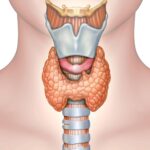- Home
- GYNECOLOGY/OBSTETRICS
- Endometriosis

Endometriosis is a chronic gynecological disorder characterized by the presence of endometrial-like tissue outside the uterine cavity, which induces a chronic, inflammatory reaction.
This ectopic tissue can implant on various pelvic organs, including the ovaries, fallopian tubes, peritoneum, and, in some cases, distant organs. Endometriosis is a significant cause of chronic pelvic pain and infertility in women.
Epidemiology
- Affects 6-10% of reproductive-aged women, with a higher prevalence among women with infertility (25-50%) and those experiencing chronic pelvic pain (40-60%).
- The disease can occur in adolescent girls and postmenopausal women, especially if hormone replacement therapy is used.
- There is a strong familial predisposition, with a 6-7-fold increased risk in first-degree relatives of affected individuals.
Etiopathogenesis
The exact cause of endometriosis is multifactorial, with several theories proposed:
1. Retrograde Menstruation Theory
- Suggests that menstrual blood containing endometrial cells flows back through the fallopian tubes into the pelvic cavity, where the cells implant and grow.
- Supported by the fact that retrograde menstruation occurs in up to 90% of women, although not all develop endometriosis.
2. Coelomic Metaplasia Theory
- Suggests that peritoneal cells transform into endometrial-like cells, potentially influenced by hormonal, environmental, or immune factors.
3. Embryonic Rest Theory
- Proposes that Müllerian duct remnants in the pelvic cavity undergo differentiation into endometrial tissue under specific conditions.
4. Stem Cell Theory
- Endometrial stem/progenitor cells may contribute to the pathogenesis by spreading through the vascular or lymphatic systems.
5. Immune Dysregulation
- The immune system fails to clear ectopic endometrial cells, allowing them to implant and proliferate. Increased levels of pro-inflammatory cytokines and activated macrophages are commonly found in affected women.
Pathophysiology
The ectopic endometrial tissue undergoes cyclic bleeding, similar to the normal endometrium, which leads to:
- Chronic inflammation with macrophage activation, increased cytokines, and prostaglandins.
- Formation of adhesions and fibrosis, contributing to distorted pelvic anatomy.
- Development of endometriotic cysts (endometriomas) within the ovaries, filled with old blood (“chocolate cysts”).
Clinical Manifestations
Endometriosis can present with a wide range of symptoms, varying in severity:
1. Pain Symptoms
- Dysmenorrhea (painful menstruation): Often severe, begins days before menstruation, and may worsen over time.
- Chronic pelvic pain: Persistent or cyclic pain unrelated to menstruation.
- Dyspareunia: Pain during deep intercourse due to implants on the uterosacral ligaments, pouch of Douglas, or posterior vaginal fornix.
- Dyschezia: Painful defecation, especially if implants are present on the bowel or rectovaginal septum.
- Dysuria or urinary frequency: Can occur if the bladder is involved.
2. Infertility
- Endometriosis is a recognized cause of infertility, accounting for 25-50% of cases. Mechanisms include anatomical distortion by adhesions, inflammatory effects on gametes and embryos, and altered pelvic microenvironment.
3. Asymptomatic Cases
- Up to 20-25% of women with endometriosis may remain asymptomatic, with the diagnosis often made incidentally during pelvic surgeries.
Sites of Endometriosis
- Pelvic Locations: Ovaries (most common), uterosacral ligaments, rectovaginal septum, pelvic peritoneum, bladder.
- Extrapelvic Locations: Thoracic cavity (catamenial pneumothorax), abdominal scars (following C-section), umbilicus, and rarely, the brain.
Diagnosis
Definitive diagnosis of endometriosis requires laparoscopy with histological confirmation, but non-invasive modalities are useful in the initial evaluation:
1. Clinical Evaluation
- Detailed history and pelvic examination may reveal tender nodules, fixed retroverted uterus, or adnexal masses (endometriomas).
2. Imaging Studies
- Transvaginal Ultrasound (TVUS): Useful for detecting ovarian endometriomas but has limited sensitivity for deep infiltrating endometriosis.
- Magnetic Resonance Imaging (MRI): High sensitivity for deep infiltrating endometriosis, especially of the rectovaginal septum or bowel.
3. Laparoscopy
- The gold standard for diagnosis, allowing direct visualization of lesions.
- Can also serve a therapeutic purpose, with excision or ablation of endometriotic implants.
4. Biomarkers
- CA-125: May be elevated in endometriosis but is not specific and lacks diagnostic sensitivity.
Classification and Staging
- Revised American Society for Reproductive Medicine (rASRM) classification categorizes endometriosis into minimal (stage I), mild (stage II), moderate (stage III), and severe (stage IV) based on lesion size, location, and adhesion severity.
- ENZIAN classification is used for deep infiltrating endometriosis, evaluating lesion depth in different compartments.
Management
Management of endometriosis should be individualized based on the severity of symptoms, extent of the disease, fertility desires, and age.
1. Medical Management
- Non-Steroidal Anti-Inflammatory Drugs (NSAIDs):
- Ibuprofen (400-600 mg every 6-8 hours) or naproxen (250-500 mg twice daily) can alleviate pain.
- Hormonal Therapy:
- Combined Oral Contraceptives (COCs):
- Continuous or cyclic use can suppress ovulation and reduce menstrual flow. Use low-dose estrogen-progestin combinations.
- Progestins:
- Medroxyprogesterone acetate (10-30 mg daily) or norethindrone acetate (5 mg daily) effectively reduce pain by inducing decidualization and atrophy of endometrial tissue.
- Levonorgestrel intrauterine system (LNG-IUS) is effective for localized suppression.
- Gonadotropin-Releasing Hormone (GnRH) Agonists:
- Leuprolide acetate (3.75 mg IM monthly) creates a hypoestrogenic state. Add-back therapy (norethindrone 5 mg or tibolone) minimizes hypoestrogenic symptoms.
- GnRH Antagonists (e.g., elagolix 150 mg daily): Provide similar benefits to GnRH agonists but with quicker onset of action.
- Combined Oral Contraceptives (COCs):
- Aromatase Inhibitors:
- Letrozole (2.5 mg daily) or anastrozole (1 mg daily) may be used in refractory cases, often in combination with other hormonal agents.
2. Surgical Management
- Laparoscopic Excision or Ablation:
- Recommended for symptomatic disease or when fertility preservation is desired. Excision is more effective than ablation for deep infiltrating disease.
- Hysterectomy with or without Oophorectomy:
- Considered in women with severe, refractory pain who have completed childbearing. Bilateral oophorectomy increases the chance of pain resolution but is associated with long-term risks of hypoestrogenism.
- Adhesiolysis and Resection of Deep Endometriosis:
- Improves pain and fertility outcomes.
3. Fertility Management
- Ovulation Induction and Intrauterine Insemination (IUI):
- Suitable for mild-to-moderate endometriosis.
- In Vitro Fertilization (IVF):
- Indicated for severe endometriosis or when other methods fail.
- Surgical Treatment Prior to IVF:
- Consider excision of endometriomas >4 cm to improve IVF outcomes.
Emerging and Alternative Therapies
- Selective Progesterone Receptor Modulators (SPRMs): Investigated for pain management with fewer side effects.
- Immune Modulators: Targeting inflammatory mediators.
- Nerve-Sparing Techniques: In surgical management of deep endometriosis to reduce postoperative pain.
Prognosis and Long-Term Outlook
- Chronic and Recurring Nature: Symptoms may recur in 20-40% of women within 5 years post-treatment.
- Fertility Rates: Vary depending on the stage and extent of the disease, with lower rates observed in advanced cases.
- Comprehensive Pain Management and Fertility Care: Improve quality of life and reproductive outcomes.












